Explore
Explore!
JODHPUR
Jodhpur, the second city of Rajasthan, is known as the Blue City. Located in northern Rajasthan in the Thar desert, Jodhpur was founded in 1459 by Rao Jodh and is now home to approximately one and a half million people, known as Jodhanas by the locals.
India is known as the country of colour. Colour plays a significant part in people’s lives as it permeates religion and its festivals. The shades of colours are notably different in the south of the country to the north. In the north, strong vibrant colours are used, while in the south, pastel shades are prevalent.
Jodhpur is no exception with its display of magnificent colour everywhere. Seen on the streets, walls of buildings and on artefacts, at festivals, on clothing, displays of foods with their many colour combinations of spices, and on jewellery.
Jodhpur earned its name as the ‘Blue City’ because many Brahmins lived there and painted their houses blue to ward off the intense heat in the desert city. This practice later spread to large swathes in and around the oldest part of the city, known as Brahmpuri, and is now full of blue painted houses, each one wrestling for attention. Many tourists visit this area every year, meandering the streets, keen on capturing the atmosphere and retaining their memories.
Jodhpur has a wealth of attractions to see and all are close at hand including Mehrangarh Fort, Jaswant Tharda, The Stepwells of Jodhpur, Kalyana Lake, Mandore Gardens, Sardar Market, Umaid Bhawan Palace and Museum.
Jodhpur has an active tourist culture, the most popular times of the year to visit is from October to March when the climate is at its best. The rainy season, from June to August, can be very humid, while in December and January the nights can be very cold.
Over the years, Rajasthan has been ruled by the Rajputs and the Mughals who built spectacular forts and monuments of importance. To this day, much of this culture and heritage in the state has been preserved. During the times of the Raj, Jodhpur hosted many Marwar merchants who became rich from their trade.- please remove this text.
Jodhpur is a very well laid out city with easy access to the centre, accommodation, places of interest, restaurants, street markets and shopping.
Since lockdown Jodhpur has had a renaissance. Many new trendy shops and restaurants have recently opened their doors offering a wide range of clothing, accessories and foods.
The current Maharajah, Gaj Singh II plays an active part in the city.

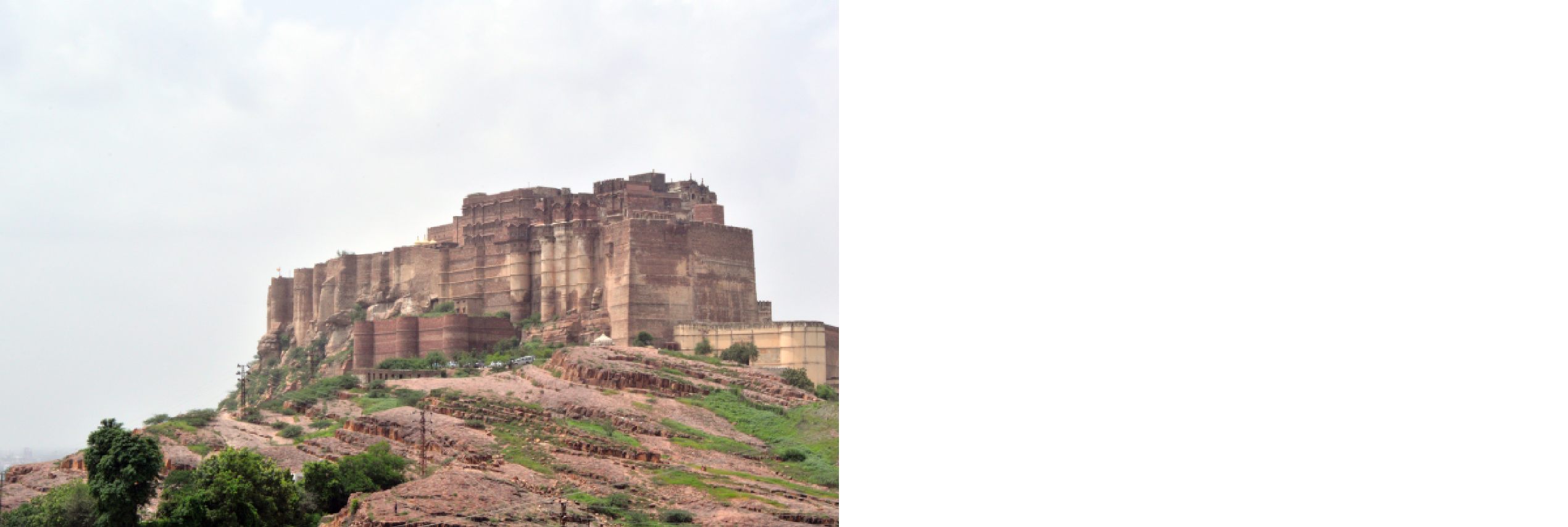
Mehrangarh Fort
Jodhpur is filled with buildings of great architectural interest, especially the majestic and beautiful Mehrangarh Fort, also known as the Fort of the Sun, and one of the largest forts in India. It was built from red Jodhpur sandstone in 1459. Voted “Asia’s Best Fortress” by Time Magazine and designated a World Heritage Site by UNESCO, Rudyard Kipling referred to the fort as ‘the work of angels, fairies and giants”. When looking down from the fort, you can hear the gentle hum of the blue city below in motion.
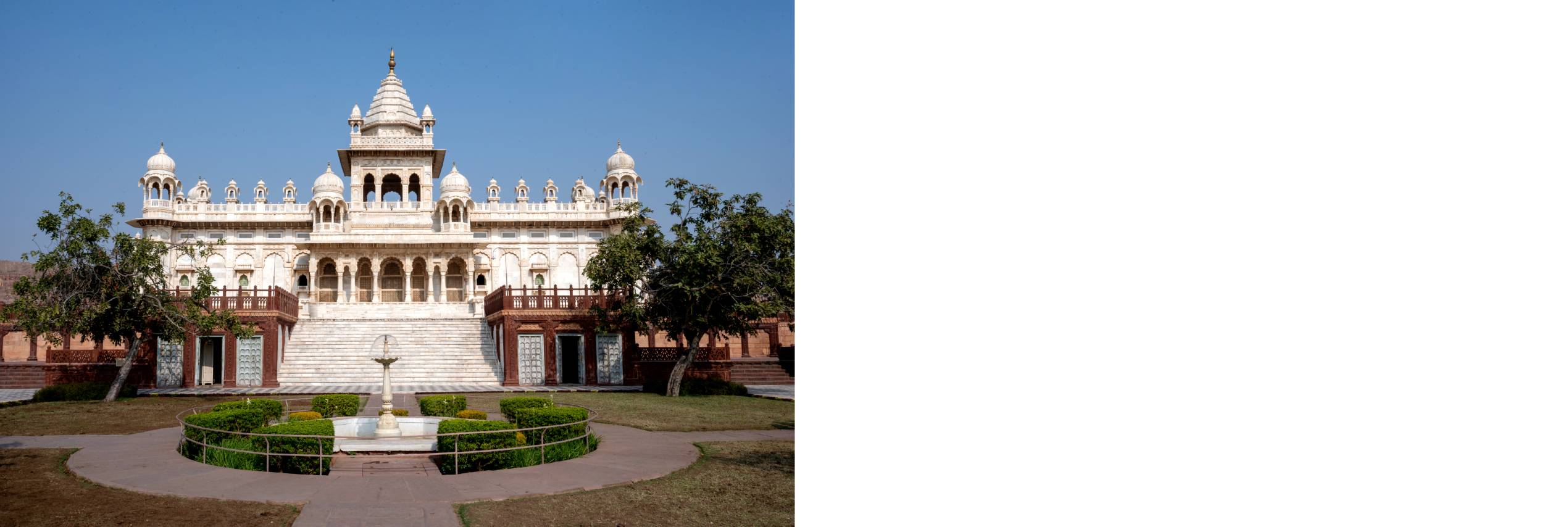
Jaswant Thada
Jaswant Thada is a spectacular white marble cenotaph and a cremation ground for the royal family of Marwar. Looming high above the city, and during the times of the music festivals held in Jodhpur, it plays host to concerts, held in the grounds.
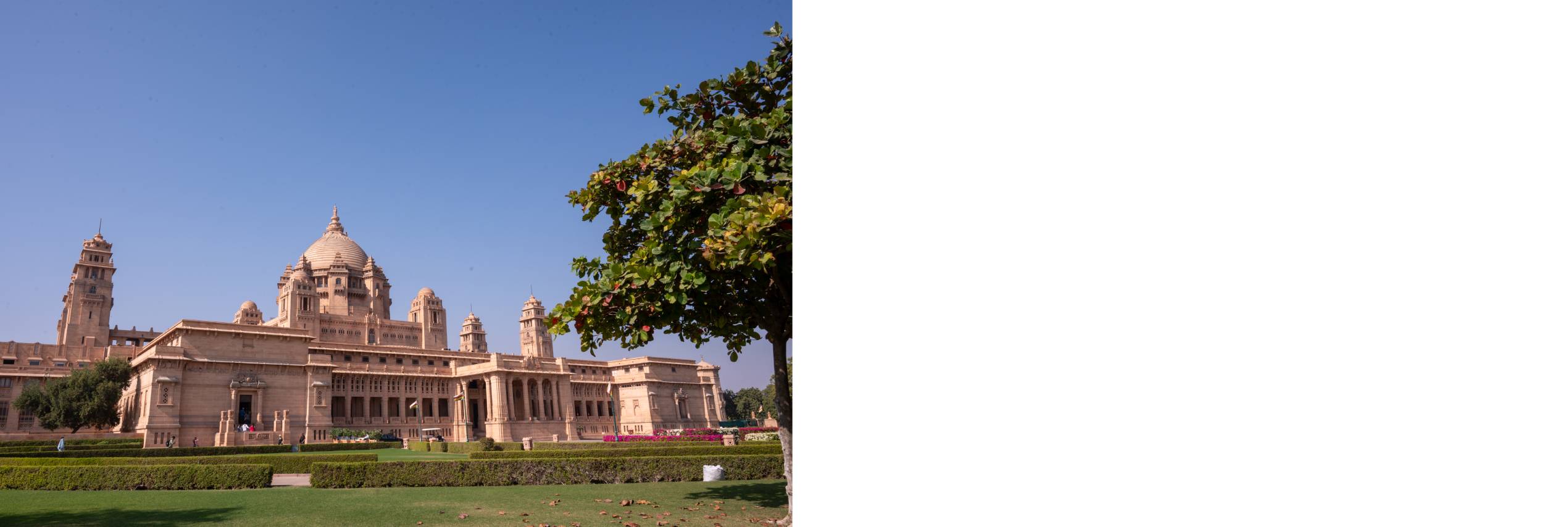
Umaid Bhawan Palace
In the distance stands the majestic Umaid Bhawan Palace, the residence of the current Maharajah, Gaj Singh II. Designed in the distinctive Indo-Deco architectural style, the palace also operates as a luxurious five-star hotel, frequently hosting grand Hollywood and Bollywood weddings, as well as visiting royalty.
Umaid Bhawan was opened officially for the visitors in the year 1943, its rooms include a throne room, meeting halls, a library, a ballroom, a spa, an indoor swimming pool, and a sauna. Sports facilities include a marble squash court and tennis courts. The Umaid Bhawan is now a museum and the residence of the present maharajah Raja Gaj Singh 11. Visitors, while staying at the magnificent building, can enjoy leisurely strolls around the sprawling garden where they can find peacocks, India’s national bird, visit the vintage clock collection, marvel at the trophies bar, and see the exquisite Ramayan paintings.
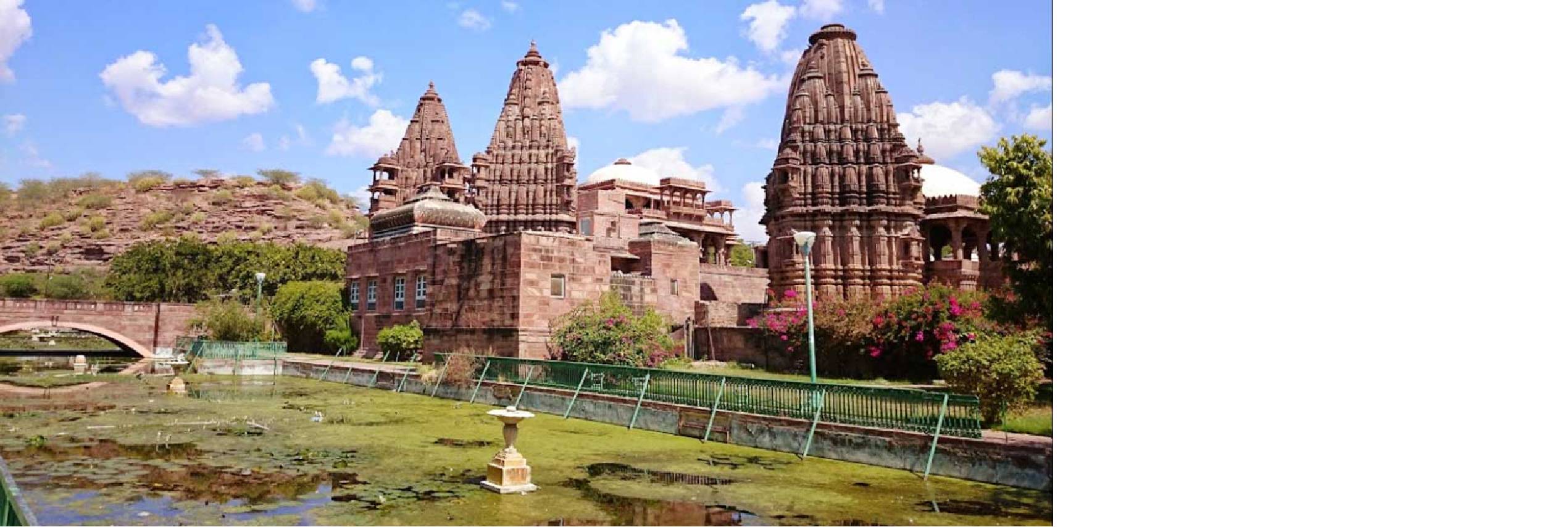
Mandore Gardens
Located almost ten kilometres from the old city and very popular with tourists, Mandore Gardens can be found. The garden is full of royal cenotaphs, which are quite distinct from each other. Within the gardens, there is a government museum, and small lakes filled with fish which visitors can feed. The Hall of Heroes is home to sixteen figures, images of deities, carved out of a single piece of rock.
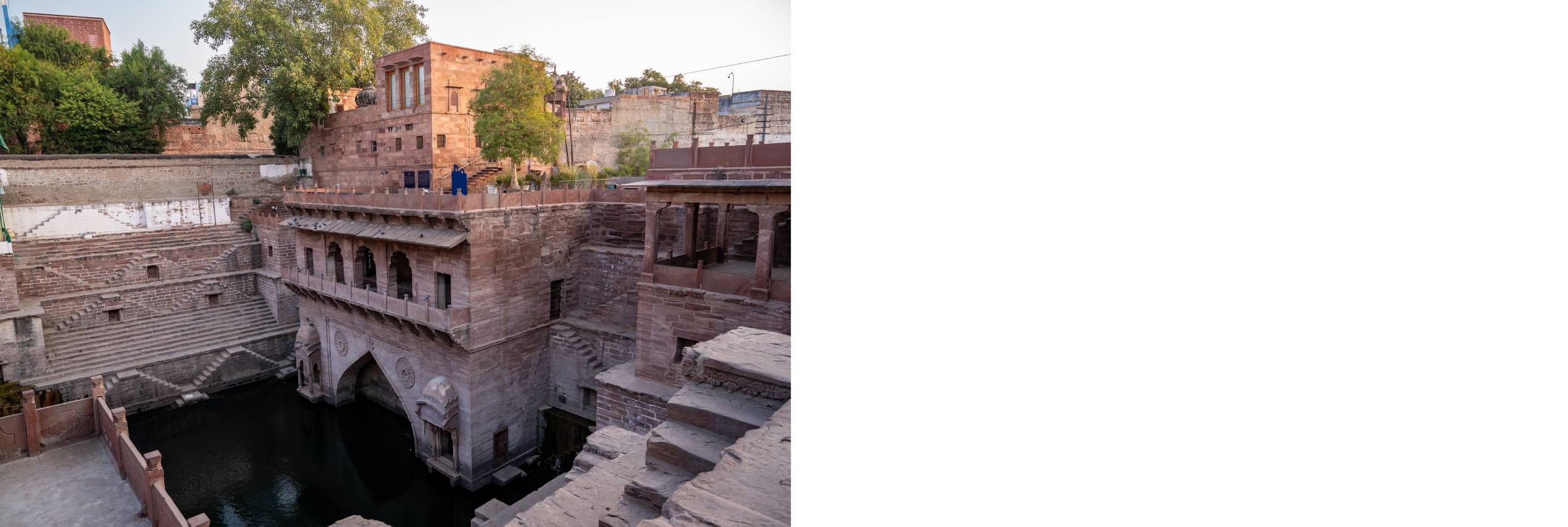
Toorji Ka Jhalra
Build by the Maharaja Abhay Singh’s Queen in 1740s, Toorji Ka Jhalra is an age-old public well, known today as the Stepwell. Now renovated after a long time, the water is now filled with fish. It now provides water access throughout the year. When the well was restored, many carved treasures, made from Jodhpur’s famous rose-red sandstone were discovered. These stone niches housed deities, lion and cow waterspouts, dancing elephants and intricate artifices. Exclusive shops, hotels, restaurants and cafes can also be found here.

Kaylana Lake
Lake Kalyana is one of the most visited destinations in Jodhpur. It is well-known for its spectacular scenery, and is very popular with tourists, especially birdwatchers when the Siberia Cranes visit here during the winter months. Kalyana Lake is a man-made lake built by Pratap Singh in 1872 and spreads over 84 square kilometres. Lake Kalyana is very popular at sunset when visitors come and gaze at the wonderful views. The lake acts as a source of water for the residents of Jodhpur city and the neighbouring areas.
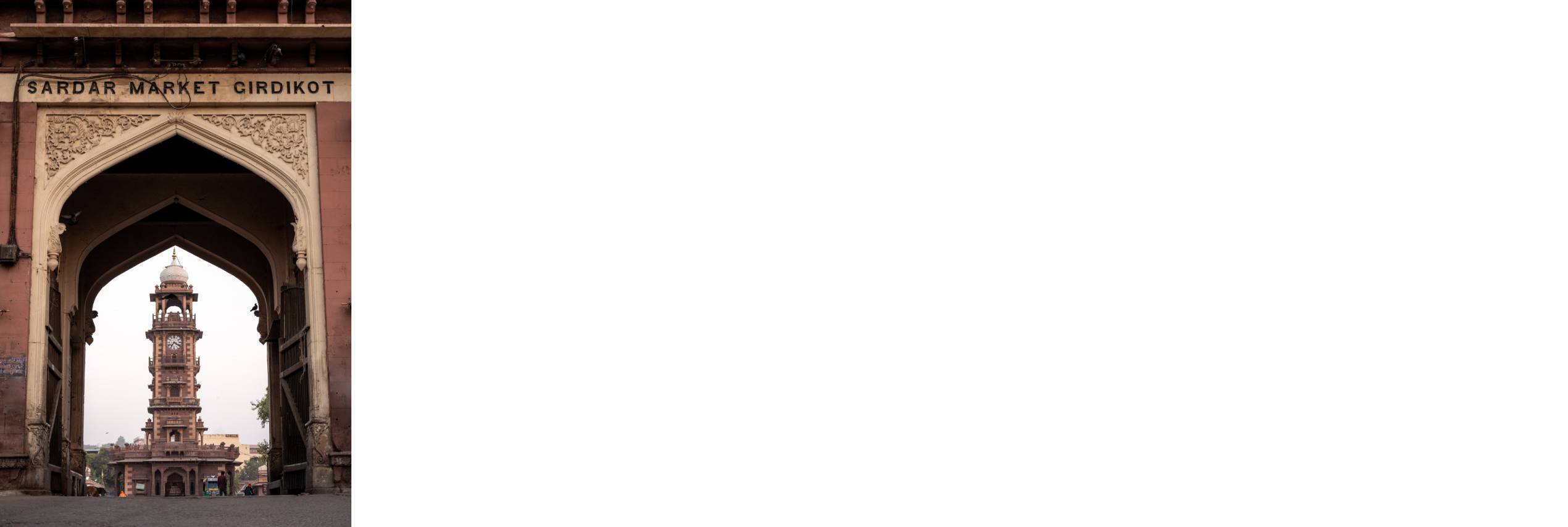
Clock tower
Only a few minutes’ walk from Manak Chowk, the lively Sardar Market can be found. Looked over by its majestic Clock Tower, known locally in Hindi as Ghanta Ghar, it is located at the centre of the old town. The market takes place every day from mid-morning to late evening. Here you can purchase anything from spices and household items, saris, fresh fruit and vegetables to fabrics, and jewellery especially the vast assortment of brightly coloured bangles.
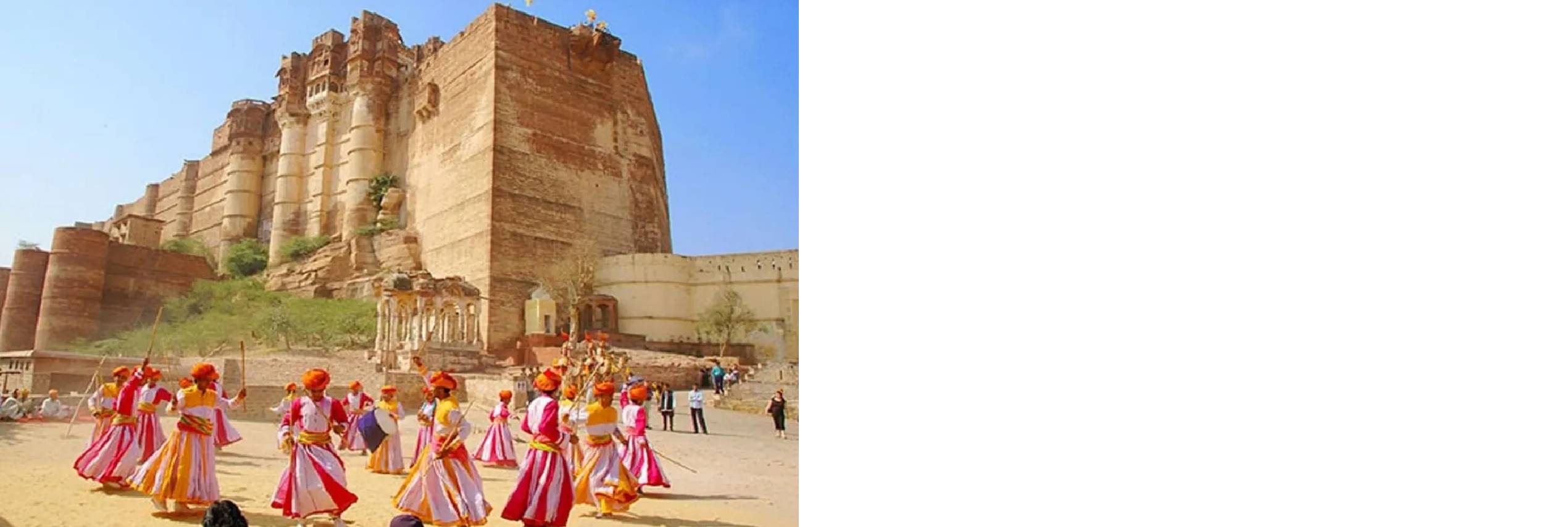
Festivals
Jodhpur is often referred to as the cultural centre of Rajasthan. The city has a rich musical heritage and twice a year the city plays host to two of the most diverse music festivals in India, both supported by the Maharajah’s foundation attracting many tourists and music enthusiasts from around the world.
Rajasthan International Folk Festival (RIFF)RIFF is held at the magnificent Mehrangarh fort in October/November during the time of the brightest full moon of the year. The festival’s international patron is Sir Mick Jagger, who is often seen there. Local traditional Rajasthani musicians, whose skills are passed down from generation to generation and live in the nearby villages, perform on stage with the international musicians leading to an extraordinary fusion of music, resulting in a sound that is both unique and totally mesmerising.
There is nothing more exciting than sitting at the incredibly beautiful Jaswant Thada monument at five-thirty in the morning waiting for the first concert of the day to commence while watching the haze on the city lift and the new day’s dawn break. The city appears as if it has been painted with a new palette of colours, as you listen to the unique musical notes while sipping hot chai from traditional clay cups.
The festival has been recognised as the People’s Platform for Creativity and Sustainable Development by UNESCO.
The World Sacred Spirit Festival takes place in February. Spread over five days in the spectacular setting of the magnificent grounds of the fort in Nagaur and at Mahrangarh fort in Jodhpur (two days in Naguar followed by three days in Jodhpur)
The festival, which counts Sting as their International Patron, includes workshops, qawalis and lectures on Sufism in the programme. Qawali music emerged from India and Pakistan as early as the thirteenth century and brings together Sufism and their Islamic mystical traditions, on occasions taking people into a hypnotic state.
Enchanting and quite magical, the festival focuses on both Indian musicians and musicians from across the globe, giving the audience a brilliant insight into this unique musical style that embraces music, poetry, and dance.
Throughout the festival, concerts take place during the day and into the late hours of the night.
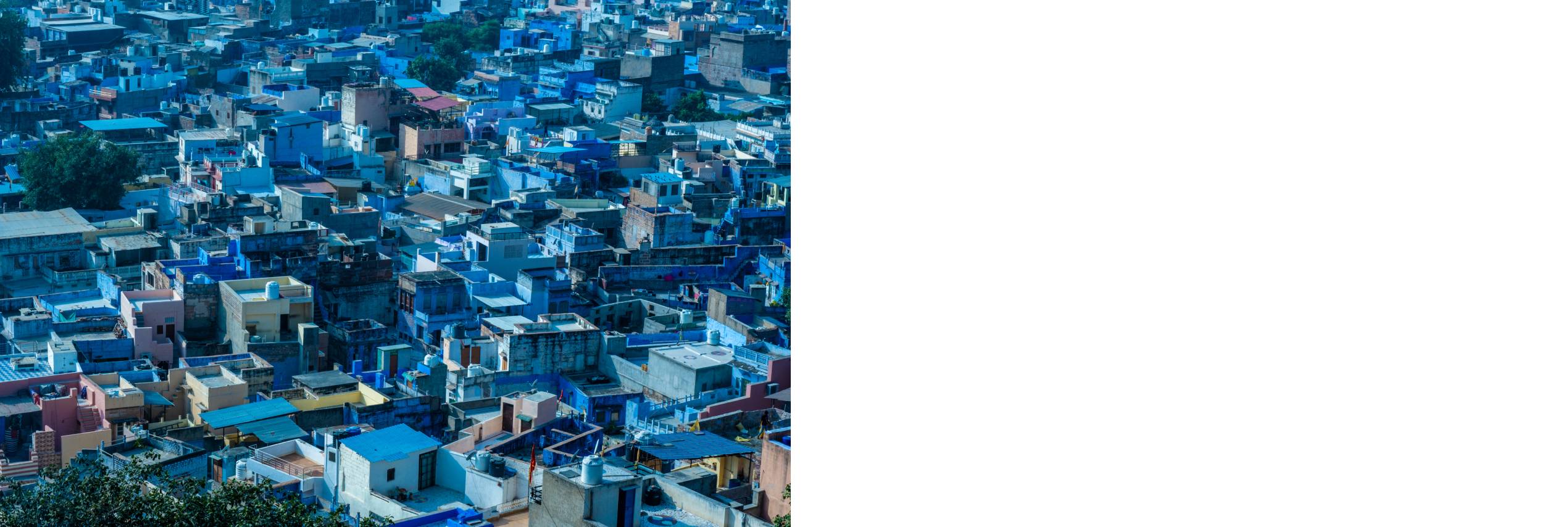
Navchokiya
Navchokiya is a short walk from the main Stepwell. It consists of nine adjoining streets where you can see the remains of beautiful havelis, originally owned by wealthy merchants and features exquisitely carved jali screens made from sandstone with the most intricate of designs.
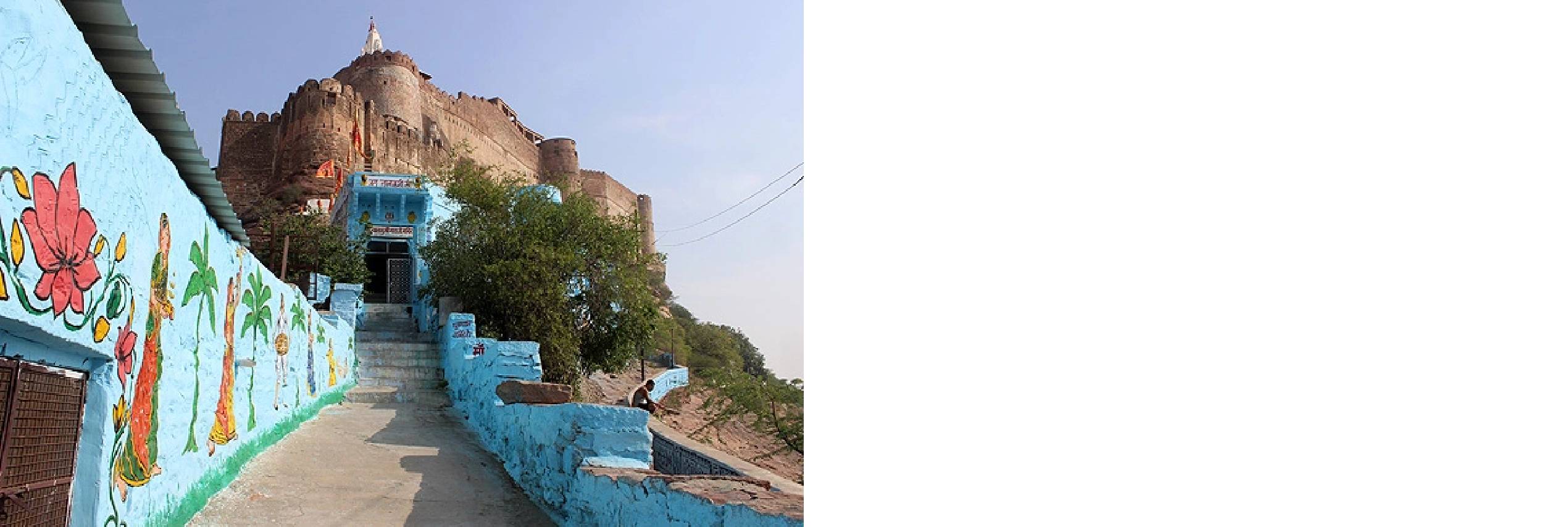
Blue City Heritage Walk
The Blue City’s Heritage Trail stretches from Jodhpur railway station to the old city. From there you can walk and experience the art and the blue city in all its glory.
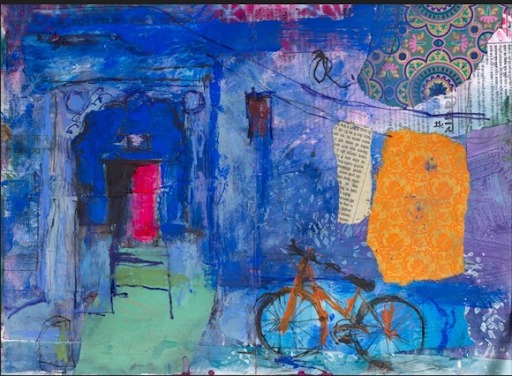
Blue City
Picture of the Blue City by artist and author Debra Luker.
